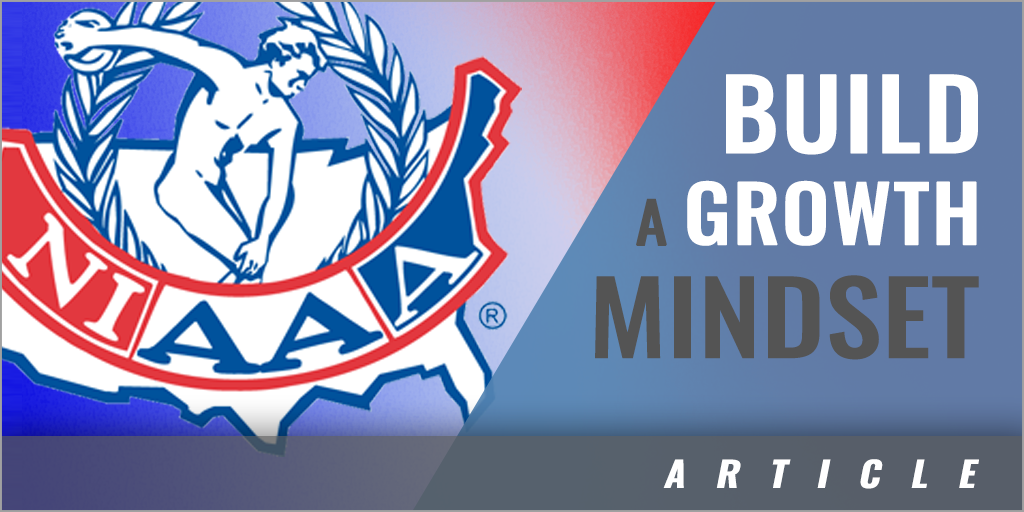|
By: Pete Shambo, CMAA Past Chair for NIAAA Certification Committee
As an athletic director, I was always disappointed in the evaluation process for coaches and the tools we used to complete the evaluations. In most cases we were checking off boxes labeled, "Outstanding," "Satisfactory" or "Needs Improvement." The coaches' only real feedback came when they saw a "Needs Improvement," which typically led to discussions around short comings in specific duties or job performance. It seldom was really about growth as a coach, rather, it was more so making sure the coach did not receive another needs improvement in that area next season. This fell short of my goal to be a leader, a true coach of the coaches. It felt more like management of coaches, which while important, was not true leadership in my book. In 2018, I introduced a new method of evaluation to my staff. I was intrigued by this new method and its simplicity; its ability to look at coaching more in depth and beyond the simple efficiencies we had used to measure good coaching. It included how we impacted things like psychology and the heart of the athlete. I had not ever given these two parts of good coaching much thought. Previously we measured mostly fundamentals; things like techniques, skill, policies, and procedure. We also measured administrative tasks, management of equipment, tactics, and program promotion. While these were important, they are the very lowest level of good coaching, and hopefully things the average coach or new coach could handle easily. We decided to train our staff in this new measurement of coaching. Any new staff was able trained as we onboarded them. This meant that we could ensure all our staff were knowledgeable about coaching in all three areas perpetually. While we still had our normal required evaluation forms, we decided to try this new method of peer coaching as part of our evaluations. During the end of season evaluation exit sessions, which had previously been one-on-one with coaches, we decided to try group sessions. The groups were very random. The coaches would choose from various time blocks offered and attend the time frame that best fit their needs. This led to grouping being very diverse. A group could be made up of various sports, both boys and girls, as well as various competitive levels. We started with everyone completing a self-evaluation using the old checking box method. I was always surprised by how much harder coaches were on themselves than I would have been using this method. Once they completed those, they were collected and the real growth would begin. We started each session by asking everyone in the group to share their "why" for wanting to coach. It was enjoyable to listen to these. Once everyone offered their why, we moved to our new evaluation tool measuring the various dimensions of coaching – physical, psychological and heart. We intentionally skipped the first area "physical," because that had been completed using the self-evaluation form. We moved on to the second area, "psychology." This area includes motivation, confidence, emotions, team cohesion, and goal setting. We asked each coach to self-assess, using scores of 0-2 for Emerging, 3-4 as Developing, 5-6 for Proficient, and 7 for Distinguished in each of these areas. We let the coaches know they would randomly be asked to share their assessment of themselves with the group in one of the areas. The key to this is using our training, coaches are asked to intentionally include these in their time/practices with their teams. This has now become a sharing session of best practices. We would ask randomly for people to share what they did with their teams in each of these areas. Most picked areas they were proud of. This in turn gave all coaches new ideas or reinforced the good things they were already doing. Occasionally, there would be a coach whom we knew needed growth in one or maybe all these areas. If this was the case, we would intentionally ask that coach which area they saw themselves needing the most growth. Almost always, they would select something they had heard from one of their peers and say, "I would like to try what they are doing in soccer; I think that would work well in our program." Without much real effort everyone was growing better without us having to say a thing. Next, we would move onto discussions around the training of an athlete's "Heart". Ask yourself; how many of your coaches impact the hearts of their athletes? Unfortunately, not as many as we would like. This is because impacting the hearts of kids is the highest form of coaching. It goes well beyond the X's and O's, and even beyond the psychology of an athlete. Impacting the heart of athletes involves teaching "purpose" knowing the why. Values, guardrails for life. Identity, who are you. Character, good and great. Significance, priorities, and finally Self-Worth. We again asked the coaches to talk about how they have intentionally included one or all of these into their time with their athletes each day. These discussions were always powerful and moving. We learned things about our staff and the great things they were doing, which we never knew. It inspired those coaches who were not there yet, to think about getting better. The growth we saw in our staff over the following seasons and years was amazing. We started to see more success in almost all programs. Community involvement skyrocketed. The positive culture throughout all programs was measurable and evident. Coaches became excited to share openly the successful things they were doing with their teams. Coaches began to look forward to our end of the season meetings to share and gain new ideas for growth. Things became self-perpetuating around coaches' growth and the desire to impact kids in more ways than just teaching skills. We incorporated these ideas into our coaching interviews. We began to ask questions beyond a candidate's coaching knowledge of a sport. We asked questions like what was their "why." We asked, "What legacy will you leave as a coach?" Most of the time the last question would lead to discussions which would tell us if they were willing to grow and if they were the right fit for our district. Some of you might be thinking, how do I find time to start this process? We quickly found this much more impactful for coaches, and it also took less time. With 150 coaches on staff, at 30 minutes per evaluation using the old method, that comes to 75 hours a year just on evaluations. The new method was 4 two-hour sessions, per season. Which equated to 24 hours a year using the new method, which was easily more impactful. A strategy for using this model of evaluation is to allow this process to be an alternate option to the more traditional evaluation. This way you have set the table for willing participation vs mandating. I promise you once your staff is exposed to this friendly process, and a chance to brag on some exceptional coaching they do within their program, they will not want to go back to the traditional check sheet we've all used. Using this process to share and grow best practices across programs is magical. As you manage the sessions, you will be able to guide coaches to seek growth in their effectiveness. They will be exposed to things their peers have already done and are benefiting from. This will give them guidance for improvement, without the use of an old form which says they need to improve without any idea of how to practically improve. The process will allow them to recognize areas in which they would like to grow and show them effective ways in which they can achieve their goals. It also invites staff from different programs to work together, which rarely happens using traditional evaluations. To start the process, pose questions around psychology and teaching heart to your staff. Ask them to answer the questions in writing for themselves. Notify them they may be called on to share what they have written. You will already have a good idea of the different coaches' strengths and/or weaknesses, so you can guide the session as needed. Here are the psychology questions we use.
Remember part of the challenge is to get your coaching staff to intentionally include these five areas into their time with your athletes each day. This will advance them as coaches beyond just the Xs and Os and build on their understanding of what great coaches do to set their programs apart. The developing an athlete's heart questions are extra special – they cover "purpose" and "values."
Listening to coaches speak about their purpose and how that guides their decisions is very informative. This is where you can learn if your staff are aligned with your values, and if not, can lead to important conversations, which keep your programs on the same page for education-based athletics. Understanding coaches' values can also allow you greater understanding of your staff and allow for more meaningful conversations about coaching growth. As these conversations take place in a group setting, the message and growth possibilities can impact your staff on a level which the traditional one on one evaluation cannot accomplish. Less time, more growth, and a chance to get your programs to share best practices are just a few of the benefits of using this method for coaching evaluation.
|







